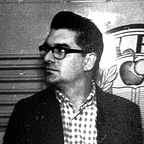Did that just turn into a great meeting?
Meetings suck. I’m not the first to say it. I have a few ideas why they suck and I will get to those in a second.
*Failing Fast is something we love to say, but it is really hard to do — even harder to talk about. No one wants to admit that they failed, so we talk about “learning” instead. I’m OK with this. I think the important thing to remember about learning is that you have to be OK with not knowing something before you can learn about it. Again, not normally an acceptable position to take in the corporate world. So, we take the approach of taking our best guess and showing it to people and being OK when our best guess turns out to be totally wrong. At least, that’s the goal, but you really have to turn a corner to get there. It’s a process… “but what does any of this have to do with meetings?” you may be asking…
I run a lot of workshops and collaborative sessions. I’m a big design process nerd. I believe collaboration is a key element to it. Some might even call this “innovating”. I was recently working with a group of folks. We did a *Journey Mapping session. I spent most of the session at the whiteboard scribbling out stick figures, blobs and arrows. Asking, “What comes next? Who’s involved? How do they feel?” We came up with a great map. Everyone walked away with a much better understanding of the system. Hooray.
Next logical step, in my mind, was a *System Blueprint. Get a whole bunch of experts in different areas of the system together for a much longer, more involved session. I got the lines taped out on the big whiteboard. Had all my post-it’s ready to post. Sharpies sharpened.
Meetings suck… but Collaborative Design Sessions rock!.. Right? Sometimes…
Meetings can be rough. 80% of the talking is done by 20% of the attendees. There’s no agenda. There’s no clear goal. Everyone is totally distracted with the “real work” they’re missing out on, so laptops are open and phones are glowing. There’s no etiquette, no clear rules. Do I have to sit or can I stand? I think better when I’m on my feet… In an effort to add efficiency we may try shorter meetings. As if wasting 45 minutes of my precious day is somehow better than wasting 60. What am I suppose to do with those extra 15 minutes? It’s not like I can cram them all together and make an hour, like squishing together all the last slivers of soap to form a new bar…
…So, I set up how things were going to go, how you fill in a System Blueprint — the rules, etiquette and goals. As we began, it became very clear that everyone was expecting me to do all the posting of post-it’s and blunting of the sharpies. Nope. Not going down that way. We had a bit of a tough-love moment and a couple of folks got out of their chairs and started working though it. I started to notice the folks distracted by laptops got up and left (they came back when they could). Some got up to hear what was being added to the board and ask questions. Others had side conversations about the journey map we made last time with other team members. One of the vendors we invited was just watching the system unfold in front of him, asking the occasional questions to a team lead. It was clear that it was the first he was seeing all that was going on in the *Front Stage, long before anything hit the *Support System he was responsible for.
It began to occur to me that what I wanted, everyone adding post-it’s to this blueprint — like a pastel blizzard, wasn’t happening. Failure? Perhaps. Learning? Hell, yes! The rules for this “session” had changed. It started to resemble a bunch of small, ad-hoc “meetings” organically taking place. Each lasted as long as it needed to. You could come and go as needed. You could grab someone out of a conversation and pull them into yours. 100% participation from 100% of the attendees. No distractions. Total engagement.
My goal for the session had been to create a visual artifact of the system as it is and to create a set of fixes to address the largest pain points. I didn’t get exactly that. What did happen was that everyone in the room had a more complete understanding of what what was happening in this system, where is was the most broken and folks were stepping up to take on fixing it.
I will admit to failing. We didn’t get the most detailed comprehensive system blueprint I have ever seen. The learning was that my expected outcomes of these things rarely mirrors perfectly what the actual outcomes are. I am learning to be more open to the unplanned, unexpected, unforeseen, serendipitous outcomes. They usually end up being better than what I had planned for. In an effort to *“create conditions for success” and not be so prescribed in what needs happen, I’m learning to give space and call it early when it looks there no more in the tank.
Looking forward to sharing more failures…erm, I mean learnings, in the future.
*Jargon Alert!
